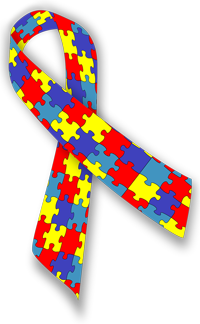Prescription for Wellness from Boundary Community Clinics
April is Autism Awareness Month
By: Beverly J. Yercheck, ANP-C
 To highlight the growing need for concern and awareness about autism, the Autism Society has celebrated National Autism Awareness Month since the 1970s. This is a good opportunity to promote autism awareness, autism acceptance, and to draw attention to the many families facing an autism diagnosis each year.
To highlight the growing need for concern and awareness about autism, the Autism Society has celebrated National Autism Awareness Month since the 1970s. This is a good opportunity to promote autism awareness, autism acceptance, and to draw attention to the many families facing an autism diagnosis each year.
What is autism?
Autism is a spectrum condition that affects individuals differently and uniquely to varying degrees. Many of the symptoms of Autism involve communication and socialization. Frequently those with Autism have problems with change, avoid eye contact, have facial expressions that do not correspond to the situation, have problems with personal space, appear to lack empathy and may avoid physical contact. Frequently these individuals have problems making and maintaining relationships.
How is Autism diagnosed?
Signs and symptoms typically appear in early childhood and can be diagnosed by a pediatric provider or by school specialists with input from family and friends. Signs that a child needs an assessment for Autism are usually noticed by the parents or primary care providers. These early signs may include the following: a baby that does not babble or coo by 12 months; a baby that does not gesture with waving or pointing by 12 months; a baby that does not speak even single words by 15 months or say 2 word phrases on his own by 24 months; or if there is any loss of language or social skills over time. These signs do not mean a diagnosis of Autism but they do signal a need for professional assessment.
Since Autism can look differently in each individual, it takes a team approach to put together a plan to help the child navigate in a “neurotypical” world. Success of the individual greatly depends on resources and support within and aside from the family. The school system can assist with interventions to help bring out the best academically and help develop social skills. It is important to remember that the individual with Autism has all the same needs that non-Autistic people have, they just express those needs in different ways.
Bev Yercheck is a primary care adult Nurse Practitioner with Boundary Community Clinics in Bonners Ferry.
 The Autism Awareness Ribbon — The Autism Awareness Puzzle Ribbon is the most enduring and recognized symbol of the autism community in the world. The puzzle pattern reflects the complexity of the autism spectrum. The different colors and shapes represent the diversity of the people and families living with the condition. The brightness of the ribbon signals hope — hope that through increased awareness of autism, and through early intervention and access to appropriate services/supports, people with autism will lead full lives able to interact with the world on their own terms. – Autism Society
The Autism Awareness Ribbon — The Autism Awareness Puzzle Ribbon is the most enduring and recognized symbol of the autism community in the world. The puzzle pattern reflects the complexity of the autism spectrum. The different colors and shapes represent the diversity of the people and families living with the condition. The brightness of the ribbon signals hope — hope that through increased awareness of autism, and through early intervention and access to appropriate services/supports, people with autism will lead full lives able to interact with the world on their own terms. – Autism Society
